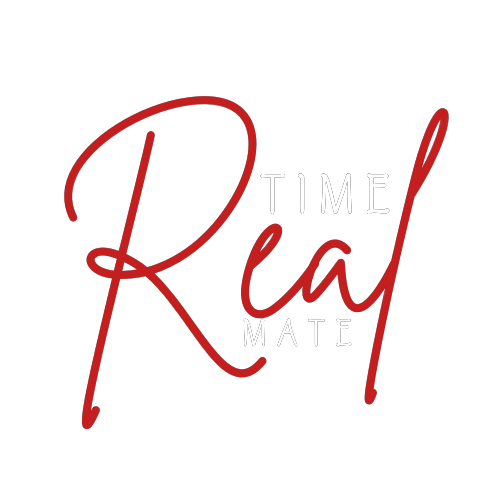Introduction:
Determining the “best gamer in the world” is subjective and can vary depending on personal opinions and criteria. However, several notable gamers have achieved great success and recognition in the gaming industry. So here are a few well-known gamers who have made significant contributions: for more detailed of best gamer in the world here are some explanation:
-
Faker (Lee Sang-hook):
Faker is a professional League of Legends player from South Korea. He is widely regarded as one of the greatest League of Legends players of all time. Faker has won multiple World Championships and numerous individual accolades. Because showcasing the exceptional skill and strategic thinking.

-
Ninja (Tyler Blevins):
Ninja gained massive popularity as a professional Fortnite player and Twitch streamer. He became one of the most recognizable faces. So gaming played a significant role in popularizing esports to a wider audience.

-
PewDiePie (Felix Kjellberg):
PewDiePie is a prominent YouTuber and gamer. He has amassed a large following for his entertaining Let’s Play videos and commentary. Although he has diversified his content beyond gaming. So he remains influential within the gaming community.

-
SonicFox (Dominique McLean):
SonicFox is a professional fighting game player known for their exceptional skills in various titles like Mortal Kombat, Dragon Ball FighterZ, and Injustice. Because they have won numerous championships and are celebrated for their versatility. And dominance in the fighting game genre. They have the best gamer in the world.
It’s important to note that this list represents only a few notable gamers. And there are many other highly skilled and influential players in the gaming world.
Now, let’s discuss the sport of discus in detail. Dividing the explanation into relevant headings:
Introduction to Discus:
Definition of Discus:
- Introduce discus as a specific event in the sport of track and field athletics.
- Define discuss as a throwing event where athletes throw a heavy disc as far as possible.
- Explain that the discus is a round object made of various materials, such as wood, rubber, or metal.
Historical Significance:
- Discuss the historical origins of discus throwing.
- Mention that discus throwing has been practiced since ancient times. Dating back to the ancient Greeks.
- Explain its historical use as a military exercise and its incorporation into the early Olympic Games.
Inclusion in Modern Track and Field:
- Explain how discus throwing is a fundamental part of modern track and field competitions.
- Highlight that it is one of the throwing events, alongside shot put, javelin throw, and hammer throw.
- Discuss the diverse range of events that make up track and field, including running, jumping, and throwing.
- Describe the main objective of the discus, which is to throw the disc as far as possible.
- Emphasize that distance is the primary measure of success in discus throwing.
- Explain that athletes strive to achieve their personal best or surpass competitors’ distances.
Techniques and Skills:
- Discuss the specific techniques and skills required for discus throwing.
- Mention the importance of proper grip, balance, and body positioning during the throw.
- Explain the rotational technique often used, where the athlete spins before releasing the discus.
Training and Preparation:
- Highlight the rigorous training and preparation required to excel in discus throwing.
- Discuss the physical conditioning, strength training, and technical practice involved.
- Mention the importance of coaches and training programs in developing athletes’ skills.
Competitions and Recognition:
- Explain that discus throwing is part of various levels of competition. From local meets to national and international championships.
- Mention prestigious events like the Olympic Games, World Championships, and continental competitions.
- Discuss the recognition and accolades received by exceptional discus throwers.
Equipment and Discus:
- Describe the equipment used, including the discus itself.
- Explain that the discus is a heavy, round object made of wood, rubber, or metal.
- Mention the various sizes and weights of discus used in different competitions.
Rules and Regulations:
Throwing Area:
- Explain that discus throwing takes place in a designated throwing area.
- Describe the throwing circle, which is a ring marked on the ground from where the thrower initiates the throw.
- Mention that the circle has a fixed diameter, usually around 2.5 meters, and is made of a non-slip material.
Sector and Foul Lines:
- Explain the concept of the sector, which is the marked area where the discus must land to be considered a legal throw.
- Mention that the sector is defined by two lines extending from the center of the throwing circle, forming an angle of approximately 34.92 degrees. https://youtu.be/ecvfslhs_wa
- Discuss the foul lines, which are marked on both sides of the sector, indicating the boundaries within which the thrower must remain during the throw.
Starting the Throw:
- Describe the starting position of the thrower within the throwing circle.
- Explain that the thrower must have a firm grip on the discus and may not step out of the circle before initiating the throw.
- Mention that the thrower must face the sector during the throw.
Throwing Technique:
- Discuss the various throwing techniques used in the discus, such as the rotational technique or the linear technique.
- Explain that the rotational technique involves the thrower making a series of spins before releasing the discus, utilizing the body’s rotational power.
- Mention that the linear technique involves a more straightforward throwing motion without significant rotation.
Foul Throws:
- Explain what constitutes a foul throw in the discus.
- Mention that a throw is considered a foul if the thrower steps out of the circle before the discus lands or if they touch the top of the circle or the ground outside the circle during the throw. /t_n-z3pijee
- Discuss that a foul throw results in a distance of zero and is not counted towards the athlete’s performance.
Measurement of Throws:
- Explain how the distance of each throw is measured in the discus.
- Mention that the measurement is taken from the inner edge of the circle to the point of landing where the discus first touches the ground or any other surface.
- Discuss that the measurement is typically rounded down. To the nearest centimeter or inch.
Attempts and Scoring:
- Explain that in most competitions. Each athlete is given a certain number of attempts, usually three to six throws.
- Mention the best valid throw-out of the attempts. It is considered for scoring and ranking purposes.
- Discuss the scoring system used, where the farthest valid throw earns. The highest points and subsequent throws are ranked accordingly.
Officials and Judges:
- Mention the presence of officials and judges in discus competitions.
- Explain that officials ensure compliance with the rules, measure the throws and determine fouls.
- Discuss that judges oversee the fair conduct of the event, resolve any disputes, and may assist in the measurement process.
Scoring and Measurements of best gamer in the world
Scoring System:
- Discuss the scoring system used in discus competitions.
- Explain that the scoring is based on the distance achieved in each valid throw.
- Mention that the farthest valid throw earns the highest points, and subsequent throws are ranked accordingly.
Concept of “Personal Best”:
- Highlight the concept of a “personal best” in discus throwing.
- Explain that a personal best refers to an athlete’s best-ever performance in terms of the distance thrown.
- Discuss that athletes aim to achieve a new personal best in each competition or over the course of their careers.
Athletes’ Focus on Improvement:
- Discuss how athletes in discus throwing constantly strive to improve their throws.
- Explain that improvement can be achieved through training, refining technique, and enhancing physical attributes. /ve7wzrize78
- Mention that athletes may work on increasing their strength, speed, and flexibility to achieve. So, greater throwing distances.
Track and Record Personal Bests:
- Discuss how athletes and coaches track and record personal bests in discus throwing.
- Explain that personal bests serve as benchmarks of progress and indicate an athlete’s growth and improvement.
- In subsequent competitions or throughout an athlete’s career.
Importance of Personal Bests:
- Highlight the significance of personal bests in discus throwing.
- Explain that personal bests are often considered important achievements for athletes. And can provide a sense of accomplishment and motivation.
- Discuss how personal bests contribute to an athlete’s ranking and performance. And best gamer in the world but evaluations in comparison to other competitors.
Competition and Ranking:
- Explain that the farthest throws earn higher rankings and potential. But more points in scoring.
- To discuss how consistent improvement in personal bests can lead to higher rankings and better competitive results. Because it’s important to discuss.
Training and Technique:
- Discuss the physical and technical aspects of discus throwing. So that Mentions the importance of strength, speed, and coordination. For the best gamer in the world search detailed explanation
- Highlight various training exercises and drills used to improve throwing technique.
Notable Discus Throwers:
- Provide examples of famous discus throwers in history.
- Mention their achievements and records.
- Discuss the impact they had on the sport.
Modern Developments and Competitions:
- Mention recent developments and advancements in discus throwing.
- Discuss major international competitions and championships.
- Highlight any new techniques or training methods that have emerged.
Discus in Popular Culture:
Discus throwing, as a track and field event, has made occasional appearances in popular culture, particularly in movies, literature, and art. While it may not be as widely represented as some other sports, here are a few examples of best gamer in the world discus in popular culture:
-
Movies:
-
-
- In the 1981 film “Chariots of Fire,” discus throwing. It is featured alongside other track and field events. Because showcasing the competitive nature of the sport.
- The 2004 movie “Troy,” based on the ancient Greek epic. The discus throw is depicted during the funeral games of Patroclus. Highlighting its historical significance.
-
-
Literature and Mythology:
-
-
- Various works of literature, especially those set in ancient Greece. May include references to discus throwing. As part of the cultural and sporting activities of the time.
-
-
Art and Sculptures:
-
- Throughout history, sculptors have depicted athletes in various sporting activities, including discus throwing. Ancient Greek and Roman sculptures often feature discus throwers, showcasing the athletic form and the significance of the sport in those societies.
- Modern artists may also incorporate discus throwing in their artwork, capturing the dynamic movements and strength of the athletes.
